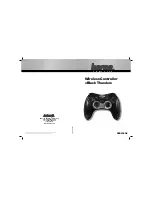
9
Operation
EPCT FirE sEriEs FirE PumP ConTrollEr
MN124016EN August 2019 www.eaton.com
4.3.2 Automatic start sequence
Automatic start is defined as a low-pressure condition,
deluge valve start or a remote auto start. Whenever the
motor is running via an automatic start, the motor can
automatically stop once all starting conditions have returned
to normal and the RPT has finished its timing cycle. If
the controller is programmed for manual stop, the motor
needs to be manually stopped via the local stop pushbutton
located on the enclosure flange.
4.4 Control inputs
The EPCT has ten (10) programmable inputs.
CAUTION
Severe damage could be caused to the microprocessor
boards if a voltage is applied to these inputs. They are
internally powered.
4.4.1 Control input descriptions
The Control Input state definitions are as follows.
Connected -
When the input is shorted by an external
contact or connection.
Disconnected -
When the input is NOT shorted by an
external contact or connection.
The Control Input operations are defined as follows.
ote:
N
Terminal 49 is common to all the inputs outlined below.
4.4.1.1. Remote manual start
When this input is in the “Connected” state, the controller
will initiate the manual start sequence. Remote start will
ignore the sequential start timer (SST) and the minimum
run timer (RPT) and will require a manual stop signal to shut
down the pump.
4.4.1.2. Remote manual stop
When this input is in the “Connected” state, the controller
will not permit starting of the pump with the exception of
Emergency Start and will shut down the pump, if already
running. Remotely stopping a full service fire pump
controller needs to be approved by the local authority.
4.4.1.3. Remote manual start/stop
When this input is in the “Connected” state, the controller
will initiate the manual start sequence. Remote start will
ignore the sequential start timer (SST) and the minimum
run timer (RPT) and will require a manual stop signal to shut
down the pump. When this input is in the “Disconnected”
state, the controller will shut down the pump, if already
running. Remotely stopping a full service fire pump
controller needs to be approved by the local authority.
4.4.1.4. Remote auto start
When this input is in the “Connected” state, the EPCT
controller will initiate an automatic start sequence. If
programmed to automatically shutoff the pump, when the
input is in a “Disconnected” state and the RPT has elapsed,
the controller will shut down the pump. This input is
typically wired to a separate pressure switch when the use
of a pressure transducer is not desired.
ote:
N
When the controller is programmed for foam
operation, the remote auto start input be a normally
closed input that will open to initiate a start.
4.4.1.5. Deluge valve start
When this input is in the “Disconnected” state, the EPCT
controller will initiate an automatic start sequence. If
programmed to automatically shutoff the pump, when the
input is in a “Connected” state and the RPT has elapsed,
the controller will shut down the pump. This input is
typically wired to remote water control equipment that
starts the controller before the pressure transducer does.
4.4.1.6. Low suction
When this input is in the “Connected” state, the EPCT
controller will signal a visual indication in the notification
area for Low Suction. If the controller is programmed
for Low Suction Shutdown it will initiate the shutdown
sequence. Refer to Section 5 to program Low Suction
Shutdown.
4.4.1.7. Low foam level
When this input is in the “Connected” state, the EPCT
controller will signal a visual indication in the notification
area for Low Foam Level. If the controller is programmed for
Low Foam Shutdown it will initiate the shutdown sequence.
Refer to Section 5 to program Low Suction Shutdown.
4.4.1.8. Proof pressure switch
When this input is in the “Connected” state, the EPCT
controller will signal a visual indication in the notification
area for Proof Pressure Switch. If Proof Pressure Switch
is enabled, the controller requires that this input is
“Connected” before allowing a start sequence. Refer to
Section 5 to program Proof Pressure Switch.
4.4.1.9. Low room temperature
When this input is in the “Connected” state, the EPCT
controller will signal a visual indication on the main display
board for Low Room Temperature. The Common Alarm relay
will also de-energize for remote monitoring of this alarm.
4.4.1.10. High room temperature
When this input is in the “Connected” state, the EPCT
controller will signal a visual indication on the main display
board for High Room Temperature. The Common Alarm relay
will also de-energize for remote monitoring of this alarm.
















































